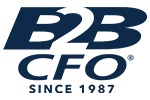
Exit Planning Strategies with ESOP’S
Posted on March 11, 2020 by Tom Azzarelli
You may be thinking of selling your business in the traditional way but have you considered an ESOP (Employee Stock Ownership Plan) as an alternative vehicle to exit your closely held business? If not, this article may get you thinking.
ESOP’s have been around since the early 80’s but not well known as a selling strategy for business owners of a closely held business until recently. The very name ESOP suggests confusion not only with the business Community but also with many Accountants as well. Some demystification is required.
An ESOP (Employee Stock Ownership Plan) is a defined contribution employee benefit plan that allows employees to become owners of stock in the company they work for. It is equity based deferred compensation plan. Under the ESOP plan, companies provide their employees the opportunity to acquire the company’s shares at a reduced price over a period of time. Employee ownership can mean many things, ranging from a few executives owning stock in their companies to the ownership of a company by most or all of its employees.
So what does an ESOP have to do with selling your business? Let’s examine the benefits of selling your business through an ESOP compared to an outright sale to a third party. If you sell your business to a third party you will receive cash, stock or perhaps notes as payment for the purchase price. Without proper tax and estate planning strategy the taxes paid on the gain from this type of transaction may take up to 50% of your proceeds. Of course, there are some sophisticated tax concepts that can be utilized to shelter some of this tax but for the most part the tax bit will be big. When you do an ESOP, seller shareholders are given special tax favored treatment under IRS Section 1042 election that allows deferral of the gain if certain Tax Laws, Department of Labor and ERISA rules and guidelines are followed. How does this work? There are several steps in the process but let’s assume you have arrived at a valuation for your business and you are ready to sell it to your employees. By the way, you do not have to sell all of your shares or lose control either. In fact, you can still work in the company every day if that’s a preference of yours.
To make it a simple example, let’s say the sales price is $5,000,000 for 30% of the stock. (I used 30% because this is the minimum percent to qualify for special tax favored treatment mentioned above)
The ESOP Trust, an entity formed to hold the shares for the employees the seller shareholder sells will pay you $5,000,000 for 30% of the company’s stock. There are several ways for the ESOP to raise the funds to pay you but we will not get into this in this article. I’ll save these details for further articles. Let’s assume they have the funds. Now comes the important part! You must invest (within 18 months) the $5,000,000 you receive in Qualified Replacement Property (QRP) (stocks etc.) and make an election under the IRS Code Section 1042 in order to get the qualified tax favored deferral of the gain. The gain is postponed indefinitely until the sale of the QRP and if you hold it in your estate it’s never taxed. The transfer to your heirs will be on a stepped-up basis. Not a bad deal! Also there are significant tax deductions and savings at the company level with an ESOP transaction that generates positive cash flow.
But you are wondering how do I get any money if it’s all invested and I can’t sell shares without being taxed? You can borrow against these funds and pull out a significant amount of the $5,000,000. The end result of the transaction? You diversified your wealth into a liquid portfolio and you have no tax bill unless you sell the QRP.
An ESOP is a great Estate Planning mechanism and one that is worthy of a hard look when you are thinking about your EXIT Strategy.
In further articles I will elaborate more on the process involved in preparing for an ESOP and how they work and the benefits to shareholders and ESOP companies.

